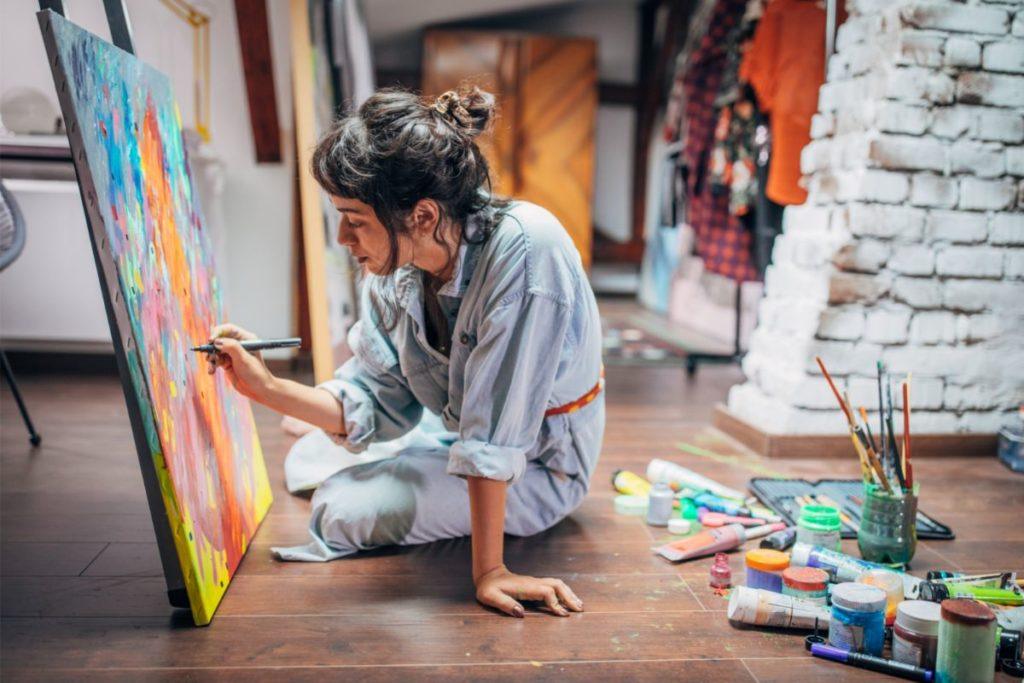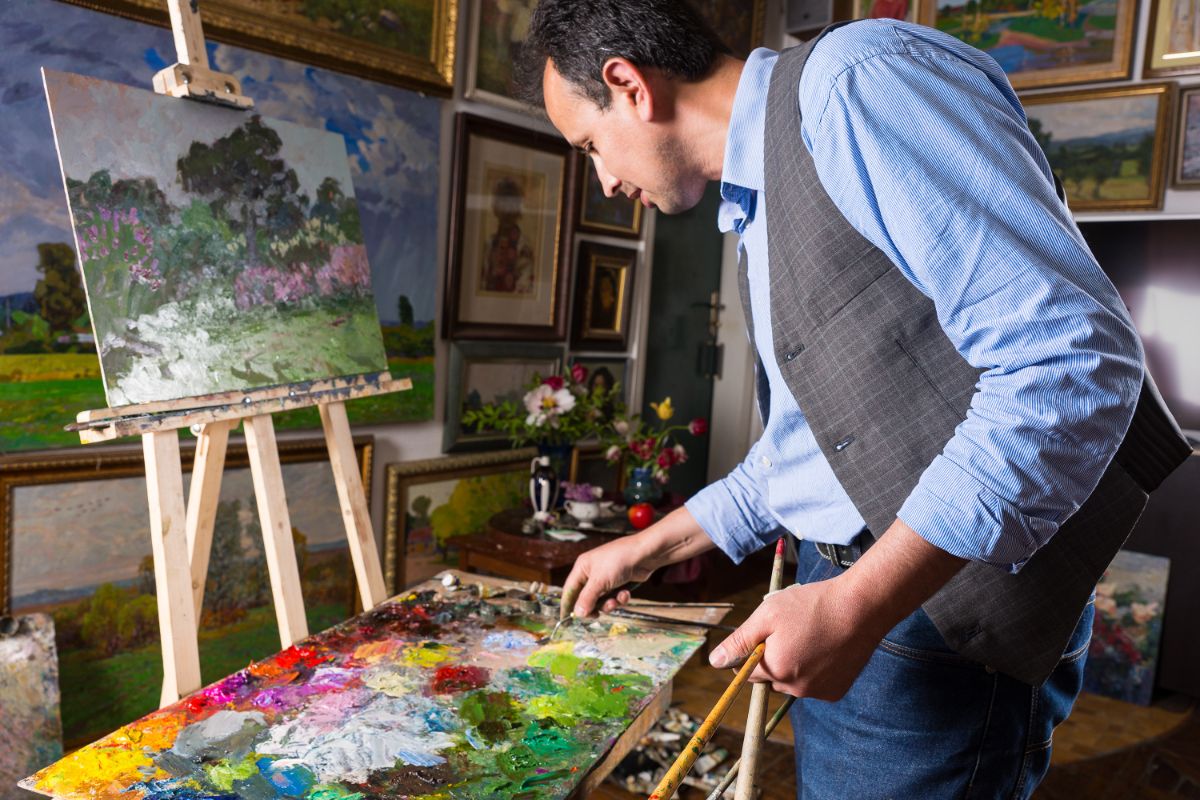
How Do You Make Your Art Look Professional (3 Simple Ways To Boost Your Work)
Art is a wonderful way to express yourself. It’s one of the most human things that you can do – even back when we were cave-dwelling Neanderthals, we were still making art.
But when you’re truly passionate about art, it can be frustrating to feel as though your work is missing something. You look at other artists and their work and wonder why your creations never look like that.
But art is a skill, not just an innate talent. Anyone can learn how to draw or paint in more interesting and creative ways and look like a professional artist if you’re willing to put in the time.
If you want to figure out how to make your art look more professional, whether for a hobby or to start your own business, then try out these three simple techniques to add more complexity to your art and boost the quality of your work a lot.
Consider Composition
One of the most important things to consider when trying to make your art stand out is the composition.
When we first start practicing art we tend to put our subject (the main thing we’re drawing) slap-bang in the middle of the canvas. And whilst this can be fine for certain pieces of art, it can be a little boring to look at.
In order to take your art to the next level, think about your composition and the ways that the shapes all work together to create an image.
At the end of the day, every image can be broken down into shapes, and the ways that these shapes contrast or match each other will inform your art a lot.
If you want to see if your art has good composition or not, start by blocking it out: where are all of your shapes lining up on the canvas, where are the lines all pointing to?
You’ll want to try to make sure that your lines are pulling focus back towards your subject, especially if you have a lot going on.
If you want to experiment with composition, here are a few exercises that you can try:
Tiny Subject
A very dramatic way to focus on your composition and play around with what you can do is to make your subject very small within the canvas.
Maybe they’re standing before a massive building or monster, perhaps they’re at the end of a very long road.
Whatever works best for what you want to draw and practice, see if you can practice using the surroundings to build a story and work on your composition
Put A Number On It
A warm-up that I like to use when I’m practising my art is something I call “Put A Number On It”. I use a random number generator and then limit the number of elements I can put in my work to that number.
This can force you to think about your composition, especially when you get a really high number or a really small one.
Random Lines
Finally, to really experiment and play with your composition, start by drawing a bunch of random lines across your canvas. Your job now is to turn these into a background or elements of your image.
This might feel weird, and might not result in very good results, but the aim is to stretch yourself and get out of your comfort zone – some really interesting stuff can happen out there.

Dramatic Lighting
Once you’ve nailed down your composition and created an interesting visual for your art, the next step is to add lighting.
This is one way to immediately boost your art and make you look 10 times more professional, if you can get it right that is.
First of all, pick a primary light source. This doesn’t have to be on the canvas, but it might help to visualize where it’s situated.
Then draw some lines from that point to get a good idea of where the shadows and highlights would be sitting.
You can either use soft lines to suggest these shadows, or hard lines and dramatic shadows – you need to know what kind of atmosphere you’re trying to create.
Use Diegetic Sources Of Light
By this, I mean, find things within your image that cast light. This could be a mobile or television screen, or a fire/lamp maybe. Use this as a secondary light source to add another layer of depth to your art.
Although it can be difficult to balance your light sources and make everything look right, it’s worth persevering until you’re happy with it.
You might find that you get to an “ugly phase” where the lighting doesn’t seem to make sense, but just push through it, and you’ll find that you’re really able to get a really dynamic and interesting image.
Be Dramatic
You don’t have to be completely true to life. You can fudge reality just because you think it looks better.
Would this thing really catch the light like that? Would those shadows be that dramatic? At the end of the day, it’s your art, and your interpretation of the source.
Don’t be afraid to get dramatic with it, it’s the only way you’ll figure out what works and what doesn’t.
Understanding of Color Theory
The final element that we’ll touch on in this article is color theory. You’ve probably already heard this phrase thrown around a lot, but do you really know what it’s all about?
It’s more than just “red means angry, blue means sad” – though this is a visual shorthand and you don’t need to shy away from it.
Why do some colors look good next to each other whilst others don’t? How do you know the right shade to drop to for shadows? How would light reflect and bounce off different surfaces and materials?
These are all really interesting questions, the answers to which will bring your art up to incredible standards.
The ways that you can improve your understanding of color theory is, simply, to study it. There are many books and videos that can help you get a better comprehension of the subject.
But also, you can study pieces of art, as well as real life.
Take pictures, or create scenes, that you can practice recreating. Observe your surroundings and take note of the way that shadows work, and how light and colors change – is there a way to recreate this?
Don’t be afraid to exaggerate either, just like with the lighting, you don’t have to always be completely true to life, if you think that a color should be more vibrant or should contrast with something else more, then you should try it.
The only bad art is no art, and every failed attempt still counts and practice.
Values
One way that you can check to see if your colors are dynamic enough is to view the values, though this is only really something that you can do with ease when working digitally.
If you put your art into black and white, can you still get a good understanding of what your art is or does it look like a mess of gray?
If it’s the latter, then you might want to try going in and changing the hues and saturation of your colors. This will add more depth to your image, and will improve it, even if you or others can’t really explain why.
Well, you would know, it’s because of the values!
Other Tips
Though I really think that those three are the elements that will let you improve the most, there are still a lot of other things that you could and should be doing in order to make your art look more professional.
For example, you should be consuming as much art and thinking about it as critically as possible. Go to art museums and take in the ways that the artists there have used color and composition.
In order to be a great artist, you need to be consuming art.
Another tip is to take breaks. If you find yourself getting frustrated with your art and like you’re stuck in a rut, take a break. Go on a walk, or read a book.
Do whatever it is that takes your mind off what you’ve been working on, and you’ll find that once you come back to your piece, you’ll be so much more productive.
Also, if possible, get better equipment, or at least research what the best budget alternatives are. If the tools you’re using are better, you’ll find you have a much better time working with them.
Final Thoughts
Hopefully these tips will help you take your art to the next level. Remember to be kind to yourself and enjoy the practice of art.
Sell More Art Online
If we can't teach you, no one can!


